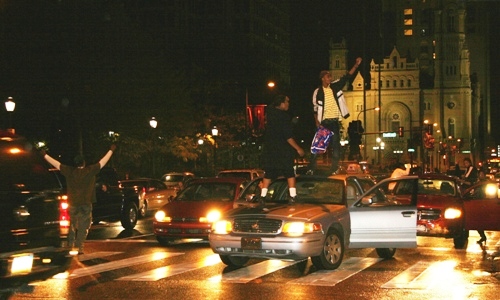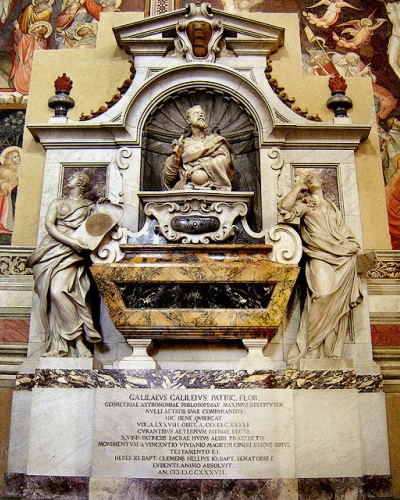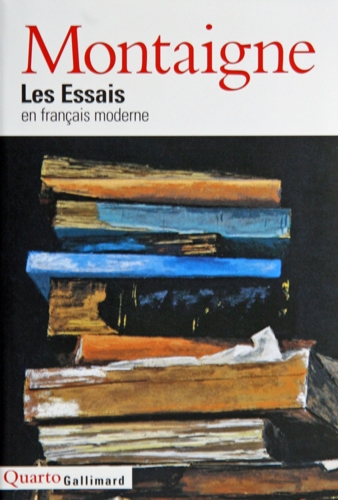| Benjamin Franklin Parkway — Philadelphia, Nov. 2008 |
Wherever you go in Philadelphia, you meet Benjamin Franklin.
One day, you visit the Philadelphia Museum or Arts on Benjamin Franklin Parkway, then gaze at the Benjamin Franklin National Memorial in the rotunda of the Franklin Institute of Science Museum.
 Another day, in the Independence National Historical Park, you walk through Franklin Square, close to the Benjamin Franklin Bridge over the Delaware River, then in front of Franklin's Grave, on your way to
Another day, in the Independence National Historical Park, you walk through Franklin Square, close to the Benjamin Franklin Bridge over the Delaware River, then in front of Franklin's Grave, on your way to  Independence Hall where the founding fathers of the U.S.A. — including Benjamin Franklin — signed and ratified the U.S. Constitution on July 4, 1776. Two blocks from there, you reach
Independence Hall where the founding fathers of the U.S.A. — including Benjamin Franklin — signed and ratified the U.S. Constitution on July 4, 1776. Two blocks from there, you reach Franklin Court, where once stood Franklin's house. Below the court is the Franklin Museum, that is filled with paintings, objects, and inventions associated with Benjamin Franklin...
Franklin Court, where once stood Franklin's house. Below the court is the Franklin Museum, that is filled with paintings, objects, and inventions associated with Benjamin Franklin...
 Okay, let's stop making fun of the way Philadelphians worship 'Ben', because he actually was one of the most historically fascinating personalities in the
Okay, let's stop making fun of the way Philadelphians worship 'Ben', because he actually was one of the most historically fascinating personalities in the  18th century. Although he was given little education as a child, he became famous for being a printer, an inventor, a scientist, a musician, a champion swimmer, an economist, a writer, a philosopher, and a statesman.
18th century. Although he was given little education as a child, he became famous for being a printer, an inventor, a scientist, a musician, a champion swimmer, an economist, a writer, a philosopher, and a statesman.
 Especially, Benjamin Franklin personifies the 18th century approach to science. When a subject interested him, he gathered information, experimented, and then developed a practical application.
Especially, Benjamin Franklin personifies the 18th century approach to science. When a subject interested him, he gathered information, experimented, and then developed a practical application.
Electricity, symbolized by the lightning rod, was the source of his worldwide renown as an inventor, but the list of his other contributions includes improved streetlights, more efficient heating, bifocal, and even a musical instrument, the armonica, of which a reproduction is displayed in his underground Museum below Franklin Court.
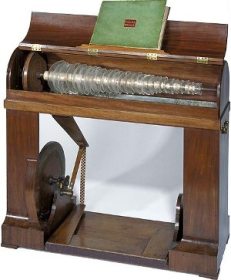 Franklin was in England in 1761, when he heard a performer playing musical glasses. He wrote then: "He collected a number of glasses of different sizes, fixed them near each other on a table, and tuned them by putting into them water, more or less as each note required. The tones were brought out by passing his fingers round their brims."
Franklin was in England in 1761, when he heard a performer playing musical glasses. He wrote then: "He collected a number of glasses of different sizes, fixed them near each other on a table, and tuned them by putting into them water, more or less as each note required. The tones were brought out by passing his fingers round their brims."
Franklin loved the music, and because it is very difficult to set up about fifty glasses on a table, he decided to find a more practical method of creating music from glass. He had a glass maker create 37 glass bowls tuned to specific tones, according to their different size and thickness, then ran an iron rod through a hole in the top of each hemisphere so that they could nest together, from largest to smallest. Under the row of bowls, he put a water reservoir to moisten the rims of the bowls, and linked all of this to an apparatus like a spinning wheel, with a foot treadle that turned the rod, making the bowls rotate. This removed the need to rotate one's own hands, and allowed quick access to every note successively, like on a piano or harpsichord.
The instrument has a full compliment of 48 notes, two octaves above and below middle C. Franklin named it 'The Armonica', after the Italian word armonica which means 'harmony'. It is also called a Glass Harmonica sometimes. The Armonica never needs to be tuned, since glass bowls don't have the same intonation troubles as wood and metal instruments. Yet there are fragile... nothing's perfect.
Franklin's invention took Europe by storm. Some said it was more popular than the violin at the end of the eighteenth century in Europe. At least 300 pieces were written for it, including works by Mozart and Beethoven. Thousands armonicas were sold; one factory employed over a hundred people for this purpose only. Many of the performers were women, and even the French Queen Marie-Antoinette took lessons.
The popularity of the instrument faded quickly afterwards, Several decades later though, Tchaikovsky used it in his famous Dance of the Sugar Plum Fairy, part of The Nutcracker ballet.
 Dinner time. We are eating together, in the kitchen of our apartment. My mother, father, brother, and me.
Dinner time. We are eating together, in the kitchen of our apartment. My mother, father, brother, and me. 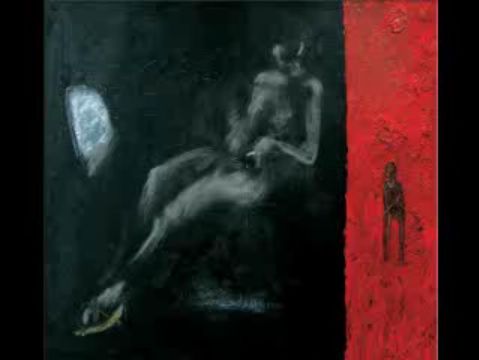
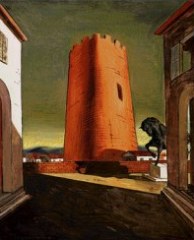

 Another day, in the
Another day, in the  Independence Hall
Independence Hall Franklin Court, where once stood Franklin's house. Below the court is the Franklin Museum, that is filled with paintings, objects, and inventions associated with Benjamin Franklin...
Franklin Court, where once stood Franklin's house. Below the court is the Franklin Museum, that is filled with paintings, objects, and inventions associated with Benjamin Franklin...  Okay, let's stop making fun of the way Philadelphians worship 'Ben', because he actually was one of the most historically fascinating personalities in the
Okay, let's stop making fun of the way Philadelphians worship 'Ben', because he actually was one of the most historically fascinating personalities in the  18th century. Although he was given little education as a child, he became famous for being a printer, an inventor, a scientist, a musician, a champion swimmer, an economist, a writer, a philosopher, and a statesman.
18th century. Although he was given little education as a child, he became famous for being a printer, an inventor, a scientist, a musician, a champion swimmer, an economist, a writer, a philosopher, and a statesman. Especially, Benjamin Franklin personifies the 18th century approach to science. When a subject interested him, he gathered information, experimented, and then developed a practical application.
Especially, Benjamin Franklin personifies the 18th century approach to science. When a subject interested him, he gathered information, experimented, and then developed a practical application. Franklin was in England in 1761, when he heard a performer playing musical glasses. He wrote then: "He collected a number of glasses of different sizes, fixed them near each other on a table, and tuned them by putting into them water, more or less as each note required. The tones were brought out by passing his fingers round their brims."
Franklin was in England in 1761, when he heard a performer playing musical glasses. He wrote then: "He collected a number of glasses of different sizes, fixed them near each other on a table, and tuned them by putting into them water, more or less as each note required. The tones were brought out by passing his fingers round their brims."